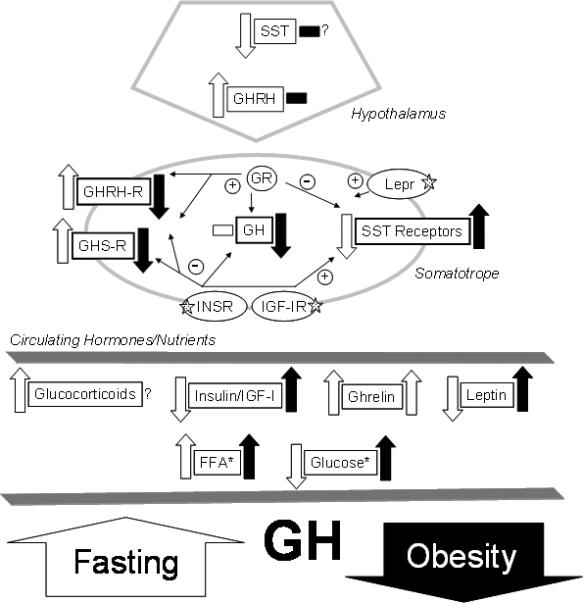Figure 1.

The impact of metabolic extremes on GH-axis function. The directional impact of metabolic extremes on hypothalamic and somatotrope gene expression important in GH-axis function, as well as circulating factors important in these changes are illustrated by block arrows (up or down) and horizontal blocks (no change). Open (white) blocks represent the impact of fasting, while solid (black) blocks indicate the impact of obesity. Fine arrows connect receptor activation to positive or negative regulation of genes within the somatotrope, as determined by experiments conducted in primary pituitary cell cultures. Question marks (?) denote signals or endpoints in which conflicting or incomplete data has been generated. Five-point stars (✰) indicates receptor genes which have been selectively inactivated using the Cre/loxP system. *, Both free fatty acids (FFA) and glucose negatively impact somatotrope function, but the mechanism of action remains to be clarified. Abbreviations – somatostatin (SST), GH releasing hormone (GHRH), GHRH receptor (GHRH-R), leptin receptor (Lepr), insulin receptor (INSR), insulin-like growth factor I (IGF-I), IGF-I receptor (IGF-IR). This figure represents a modification of a figure published in a previous review (1).
